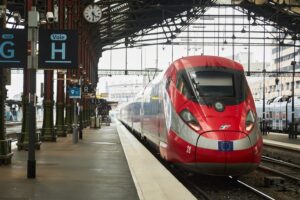The world’s largest offshore wind farm, Dogger Bank, is progressing with the foundation installation campaign for its second phase. Seaway7’s vessels, Seaway Strashnov and Seaway Alfa Lift, have begun installing monopile foundations and transition pieces for Dogger Bank B. This follows the successful completion of all 95 transition pieces for Dogger Bank A, marking the end of the first phase’s foundation installation.
Olly Cass, Project Director for Dogger Bank Wind Farm, highlighted the significance of these milestones, noting the years of dedication and innovative design solutions required due to the deployment of new turbine technology. “Every aspect of the wind farm has required us to come up with new innovative design and engineering solutions that will shape the future construction of offshore wind globally,” Cass said, extending thanks to the project team and partners.
Wouter van Dalen, Project Director at Seaway7, expressed satisfaction with the progress and the performance of the vessels. “We are happy to welcome Seaway Strashnov back to the project to commence foundation installation on Dogger Bank B,” he stated. The new heavy lift vessel, Seaway Alfa Lift, continues to install transition pieces into phase B after a successful high weather season on Dogger Bank A.
The monopile foundations and transition pieces, manufactured by Sif and Smulders, are essential for supporting GE Vernova’s 13MW Haliade-X turbines. These structures, weighing up to 1,424 tonnes and measuring up to 72.8 meters, are being installed 80 miles off the Yorkshire coast. The transition pieces feature a pioneering split-level design for safer installation and operation, with an 8-meter flange connecting the monopiles.
Following the successful installation of the offshore HVDC platform for the second phase in April, the project continues to advance. A total of 277 monopiles and transition pieces will be installed across all three phases of the wind farm, with completion expected in 2026.
Supporting components of the transition pieces are made with steel from Tata Steel in Wales, processed in Corby and Hartlepool. Companies such as Metec from South Tyneside and Granada Material Handling from Rochdale have also secured contracts for this groundbreaking project. Designed by UK experts from Wood Thilsted, the foundations are optimized to handle challenging wave loads in the North Sea, with installation depths of up to 32 meters and distances of at least 130 kilometers from shore.






